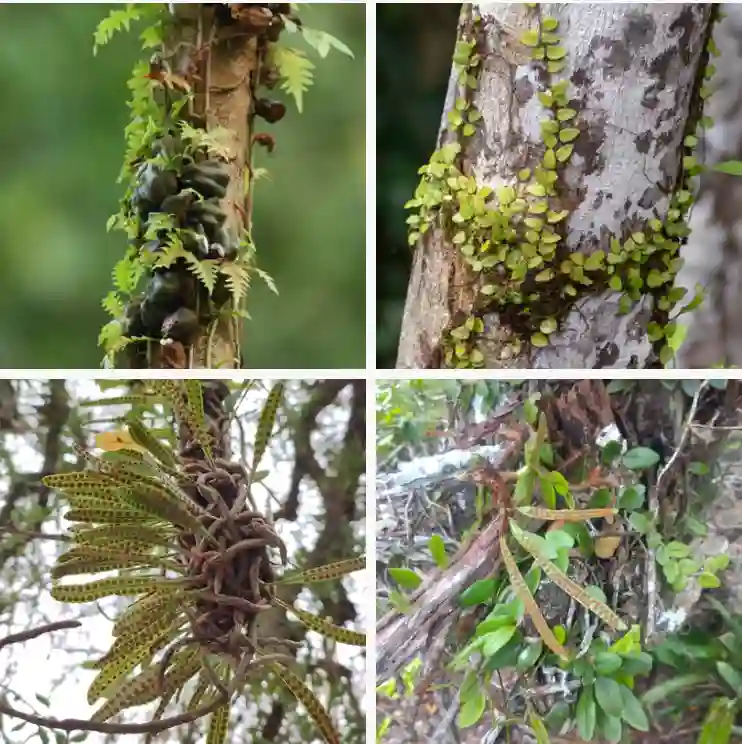
Liriope Super Blue vs Big Blue
Liriope Super Blue has really impressed me with its strikingly deep blue-green foliage and compact growth, making it a standout in my garden beds. On the other hand, Big Blue has a more classic look with its large, bold leaves, which adds a different texture to my landscape.
8 Species in Genus Liriope
Liriope Super Blue vs Evergreen Giant
Comparing Liriope Super Blue with Evergreen Giant, I found the Super Blue to be a bit more compact and vibrant, which fits well in smaller spaces, while Evergreen Giant offers a more expansive look with its taller, lush growth, perfect for creating a bold backdrop.
How to plant Super Blue Liriope?
Here’s a guide on planting Liriope Super Blue to establish a thriving groundcover in your landscape:
Choosing the Right Time and Location:
- The best time to plant Super Blue Liriope is in early spring or fall when the soil temperatures are mild. Avoid planting during the hottest or coldest parts of the year.
- Super Blue Liriope is versatile regarding sunlight. It thrives in full sun locations but also tolerates partial shade, particularly in hot climates where afternoon shade can be beneficial.
Soil Preparation:
- Super Blue Liriope prefers moist, well-drained soil. Loamy soil with good organic matter content is ideal.
- If your soil is heavy clay, amend it with compost or coarse sand to improve drainage.
- Conversely, for sandy soil, add organic matter like compost or aged manure to improve moisture retention.
Planting:
- Digging Holes (for individual plants): Make a hole slightly larger than the root ball of your liriope plant. Aim for a depth that allows the top of the root ball to sit slightly above the surrounding soil level.
- Digging Trenches (for mass planting): For mass plantings as a border or groundcover, dig a trench following your desired design. The trench depth should be the same as the root ball height.
- Planting: Carefully place your Super Blue Liriope plant(s) in the hole or trench, ensuring the roots are spread out.
- Backfill and Water: Fill the hole or trench with the excavated soil, gently firming it around the plant(s) to remove air pockets. Water thoroughly to settle the soil and hydrate the roots.
Spacing:
- The desired spacing depends on the effect you want to achieve:
- For a dense groundcover: Plant Super Blue Liriope 8-12 inches apart.
- For a more spaced-out effect: Plant them 18-24 inches apart.
Additional Tips:
- You can amend the planting area with a balanced fertilizer to provide initial nutrients for the plants.
- After planting, cover the exposed soil surface with a layer of mulch (2-3 inches thick) to retain moisture, suppress weeds, and regulate soil temperature.
- Super Blue Liriope is generally low-maintenance once established. However, water them regularly during the first growing season, especially during dry periods. After that, they are fairly drought tolerant.
Does Super Blue Liriope spread?
Yes, Super Blue Liriope does spread, but not aggressively. In my garden, I’ve noticed it slowly expanding to fill in gaps, creating a lush, green ground cover over time. It’s been quite manageable and hasn’t taken over areas where I didn’t want it. The clumps grow denser each year, but I’ve found it easy to control by dividing them when they get too large.
How long do blooms last for Super Blue Liriope?
The blooms of Super Blue Liriope are quite striking and usually last several weeks. In my experience, they start showing up in late summer and continue into early fall. The vibrant purple flower spikes are a lovely contrast to the green foliage, and they really brighten up my garden during this period.
Is Super Blue Liriope invasive?
Super Blue Liriope isn’t considered invasive, which is one of the reasons I chose it for my yard. While it does spread, it doesn’t do so in a way that chokes out other plants. I find it to be a well-behaved ground cover that complements other perennials and shrubs without overwhelming them.
Is there a difference between Liriope spicata and Super Blue?
There is indeed a difference between Liriope spicata and Super Blue. Liriope spicata, in my experience, spreads more aggressively and can be more challenging to control. It tends to send out runners, making it a better choice for erosion control. On the other hand, Super Blue Liriope grows in more defined clumps, which makes it easier to manage in my garden beds. I prefer Super Blue for its neat appearance and vibrant blooms.
If i die, water my plants!



